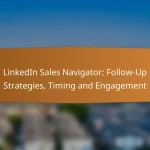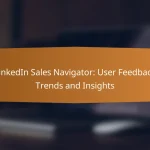LinkedIn Sales Navigator revolutionizes communication for sales professionals by offering tools that enable real-time messaging, email integration, and customizable templates. These features not only streamline interactions but also enhance relationship management and lead generation, allowing users to connect with potential clients more effectively. By leveraging advanced search filters and personalized messaging, sales teams can optimize their outreach and engagement strategies.

How does LinkedIn Sales Navigator enhance messaging?
LinkedIn Sales Navigator enhances messaging by providing tools that facilitate real-time communication, integration with email, customizable templates, and in-app collaboration. These features streamline interactions, making it easier for sales professionals to connect with leads and clients effectively.
Real-time messaging features
Real-time messaging in LinkedIn Sales Navigator allows users to communicate instantly with prospects and team members. This feature supports quick exchanges, enabling timely responses that can significantly impact sales outcomes.
Users can send messages directly within the platform, reducing the need to switch between applications. This seamless interaction helps maintain focus and enhances productivity during the sales process.
Integration with email platforms
LinkedIn Sales Navigator integrates with popular email platforms like Outlook and Gmail, allowing users to manage communications from a single interface. This integration ensures that important messages are not missed and can be tracked easily.
By synchronizing email conversations with LinkedIn interactions, sales professionals can maintain context and continuity in their communications, which is crucial for building relationships with clients.
Customizable messaging templates
Customizable messaging templates in LinkedIn Sales Navigator enable users to create and save message formats tailored to specific outreach scenarios. This feature saves time and ensures consistency in messaging across different prospects.
Sales teams can develop templates for various situations, such as follow-ups or introductions, allowing for personalized yet efficient communication. Utilizing these templates can help maintain a professional tone while streamlining the outreach process.
In-app collaboration tools
In-app collaboration tools within LinkedIn Sales Navigator facilitate teamwork by allowing users to share insights and updates directly in the platform. This feature promotes transparency and keeps all team members informed about ongoing communications with prospects.
Sales professionals can tag colleagues in messages or share relevant information, ensuring that everyone is aligned on strategies and objectives. This collaborative approach enhances the overall effectiveness of the sales process.

What are the key benefits of using LinkedIn Sales Navigator?
LinkedIn Sales Navigator offers several key benefits that enhance sales processes, including improved lead generation, enhanced relationship management, and access to data-driven insights. These features streamline communication and collaboration, making it easier for sales professionals to connect with potential clients and nurture relationships effectively.
Improved lead generation
LinkedIn Sales Navigator significantly boosts lead generation by providing advanced search filters and recommendations tailored to your target audience. Users can identify leads based on specific criteria such as industry, location, and company size, allowing for more precise targeting.
For example, sales professionals can use the platform to find decision-makers in particular sectors, increasing the likelihood of successful outreach. Regularly updating your search parameters can help you stay aligned with market trends and emerging opportunities.
Enhanced relationship management
This tool facilitates enhanced relationship management through features like real-time updates on leads and accounts. Users receive notifications about job changes, company news, and shared connections, which can be leveraged to initiate meaningful conversations.
By maintaining a proactive approach, sales professionals can strengthen their networks and foster trust. Regular engagement with leads through personalized messages can lead to higher conversion rates and long-term partnerships.
Data-driven insights
LinkedIn Sales Navigator provides valuable data-driven insights that inform sales strategies. Users can analyze engagement metrics, track interactions, and assess the effectiveness of their outreach efforts. This information helps in refining approaches and optimizing sales tactics.
Utilizing these insights allows sales teams to identify which messaging resonates best with their audience. Regularly reviewing performance data can lead to continuous improvement and better alignment with customer needs.
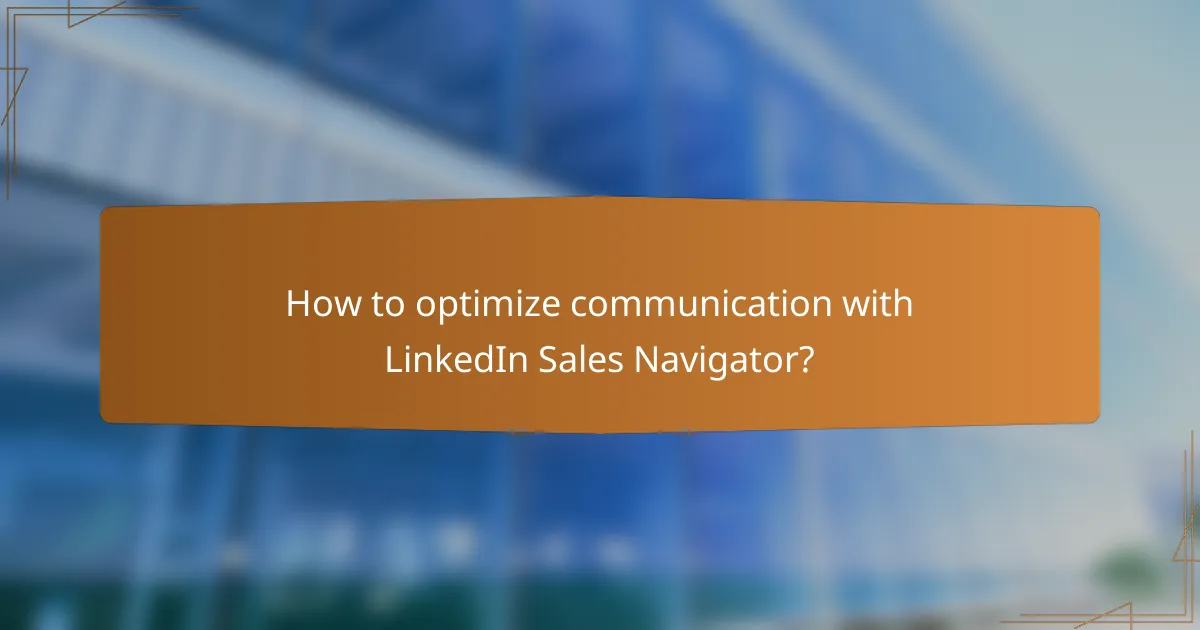
How to optimize communication with LinkedIn Sales Navigator?
To optimize communication with LinkedIn Sales Navigator, leverage its features to enhance outreach and engagement. This involves utilizing advanced search filters to identify the right prospects and crafting personalized messages that resonate with your audience.
Utilizing advanced search filters
Advanced search filters in LinkedIn Sales Navigator allow you to narrow down your target audience effectively. You can filter by criteria such as industry, company size, location, and job title to find leads that fit your ideal customer profile.
Consider using Boolean search techniques to refine your results further. For example, combining keywords with AND, OR, and NOT can help you pinpoint specific prospects. This targeted approach increases the chances of meaningful interactions.
Engaging with personalized messages
Personalized messages are crucial for effective communication on LinkedIn. Start by addressing the recipient by name and referencing a common connection or interest to establish rapport. Tailoring your message to the individual’s background or needs can significantly improve response rates.
Avoid generic templates; instead, focus on crafting messages that reflect genuine interest. Aim for concise communication that highlights how your offering can solve a specific problem for the recipient. This approach fosters engagement and builds trust.
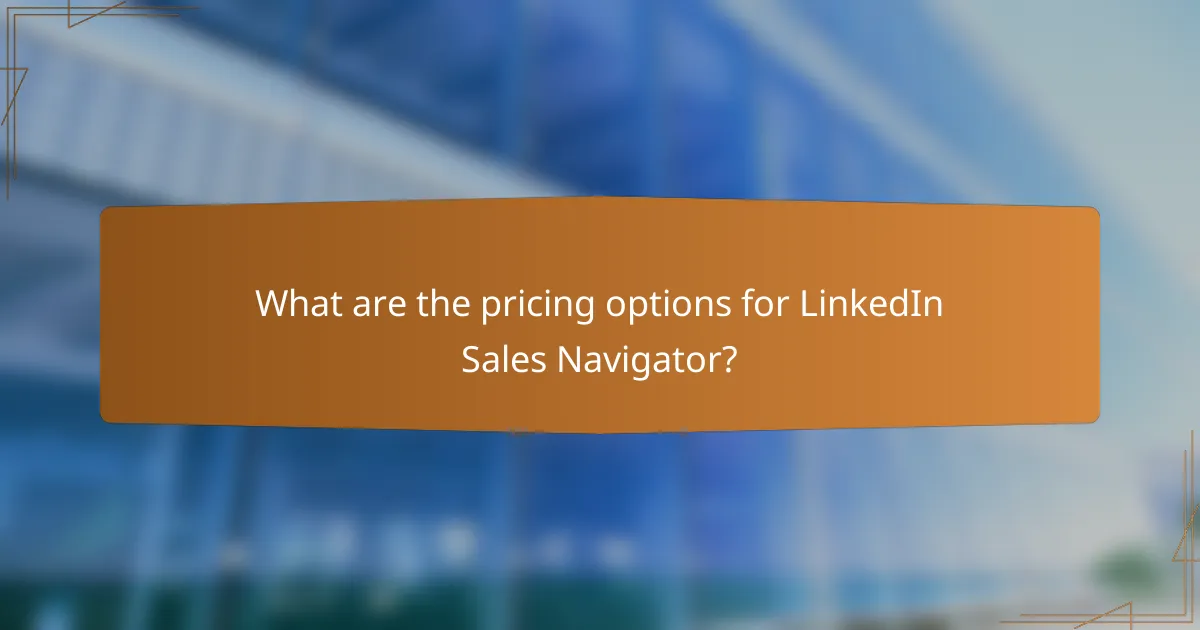
What are the pricing options for LinkedIn Sales Navigator?
LinkedIn Sales Navigator offers flexible pricing options tailored to different user needs, primarily through monthly and annual subscriptions. Understanding these options can help you choose the plan that best fits your sales strategy and budget.
Monthly subscription plans
The monthly subscription for LinkedIn Sales Navigator typically ranges from approximately $80 to $100 per user, depending on the specific features included. This plan is ideal for users who prefer flexibility and may not need the service year-round.
With a monthly plan, users can access advanced search filters, lead recommendations, and real-time insights into their accounts. However, keep in mind that this option may be more expensive in the long run if you plan to use the service continuously.
Annual subscription discounts
Opting for an annual subscription can lead to significant savings, with discounts often reducing the monthly cost to around $70 to $80 per user. This pricing structure is beneficial for businesses that require ongoing access to Sales Navigator’s features.
Annual plans typically include the same features as monthly subscriptions but at a lower overall cost. Consider your team’s needs and usage frequency when deciding between monthly and annual subscriptions to maximize your investment.

How does LinkedIn Sales Navigator compare to other tools?
LinkedIn Sales Navigator stands out for its integration with LinkedIn’s vast professional network, offering unique advantages in lead generation and relationship building. While it excels in social selling, other tools like HubSpot Sales and Salesforce provide different strengths in CRM and marketing automation.
Comparison with HubSpot Sales
HubSpot Sales focuses on inbound marketing and CRM functionalities, making it ideal for businesses looking to attract leads through content and engagement. In contrast, LinkedIn Sales Navigator is tailored for direct outreach and leveraging existing connections, which can be more effective for B2B sales teams.
While HubSpot offers features like email tracking and pipeline management, LinkedIn Sales Navigator provides advanced search filters and insights into prospects’ activities on LinkedIn. This can help sales professionals identify the right leads and understand their interests better.
Comparison with Salesforce
Salesforce is a comprehensive CRM platform that excels in managing customer relationships and sales processes across various channels. It offers extensive customization and reporting capabilities, which can be beneficial for larger organizations. However, LinkedIn Sales Navigator’s strength lies in its ability to connect sales professionals directly with potential clients through LinkedIn’s network.
Salesforce users may find that integrating LinkedIn Sales Navigator enhances their outreach efforts by providing real-time data about leads’ professional activities. This combination can lead to more informed conversations and higher engagement rates, especially in competitive markets.

What are the prerequisites for using LinkedIn Sales Navigator?
To use LinkedIn Sales Navigator, you need a LinkedIn account, preferably a premium subscription. Additionally, understanding user roles within the platform is essential for effective collaboration and communication.
LinkedIn account requirements
To access LinkedIn Sales Navigator, you must have a LinkedIn account. While a free account allows limited functionality, a premium subscription is necessary to unlock the full suite of Sales Navigator features. This subscription can vary in cost, typically ranging from $79.99 to $134.99 per month, depending on the plan chosen.
Ensure that your account is in good standing and that you comply with LinkedIn’s terms of service. This includes maintaining a professional profile and avoiding any activity that could lead to account restrictions.
Understanding user roles
LinkedIn Sales Navigator supports various user roles, which dictate access levels and functionalities. Common roles include Administrator, which manages settings and user permissions, and Standard User, who utilizes the tool for lead generation and outreach.
Understanding these roles is crucial for effective team collaboration. Administrators can assign licenses, manage user settings, and monitor usage, while Standard Users focus on leveraging the platform for sales activities. Clear communication about roles helps streamline workflows and enhances productivity.
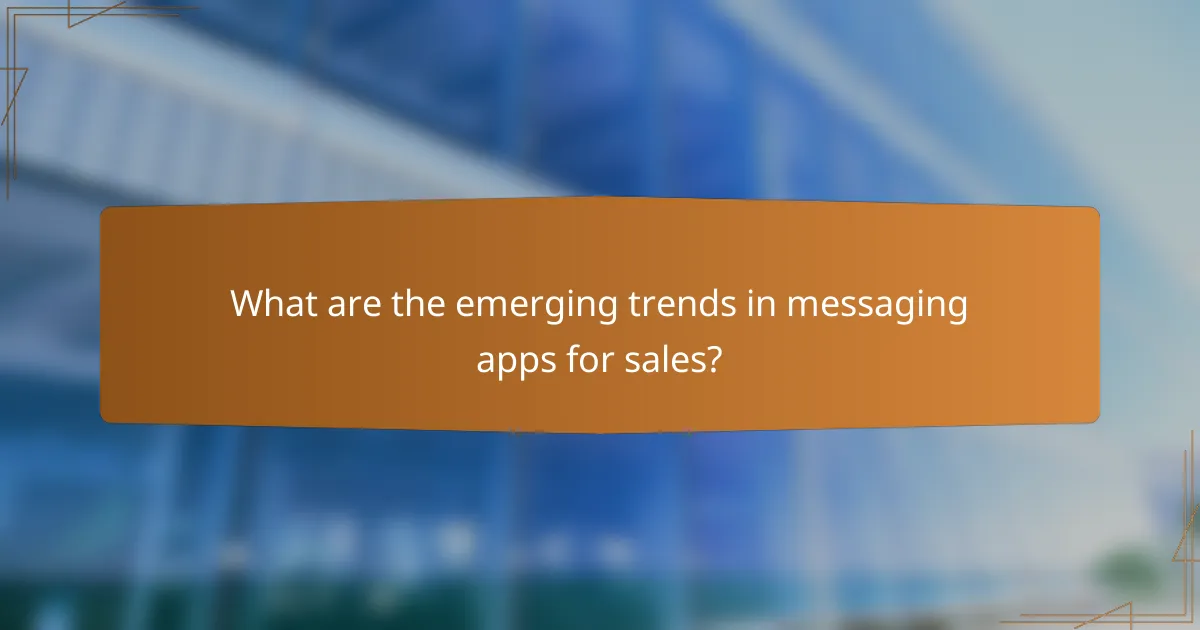
What are the emerging trends in messaging apps for sales?
Emerging trends in messaging apps for sales focus on enhancing communication efficiency and collaboration among sales teams. These trends include the integration of AI, personalized messaging, and the use of multimedia to engage prospects effectively.
Integration of AI in messaging
AI integration in messaging apps is revolutionizing sales communication by automating responses and providing insights into customer behavior. Tools can analyze conversations to suggest optimal responses or identify potential leads based on engagement patterns.
For example, chatbots can handle initial inquiries, allowing sales representatives to focus on more complex interactions. This not only saves time but also ensures that prospects receive timely responses, which can significantly improve conversion rates.
Personalized messaging strategies
Personalization in messaging is becoming crucial for effective sales outreach. Sales teams are leveraging data to tailor messages that resonate with individual prospects, increasing the likelihood of engagement.
Using information such as a prospect’s industry, previous interactions, or specific pain points can help craft messages that feel relevant and targeted. A well-personalized message can lead to higher response rates compared to generic outreach.
Use of multimedia in communication
Incorporating multimedia elements like videos, images, and voice messages into sales messaging is gaining traction. These formats can convey information more engagingly and memorably than text alone.
For instance, sending a short video introduction can create a more personal connection with prospects. Additionally, visual content can help explain complex products or services more effectively, making it easier for potential clients to understand the value proposition.

